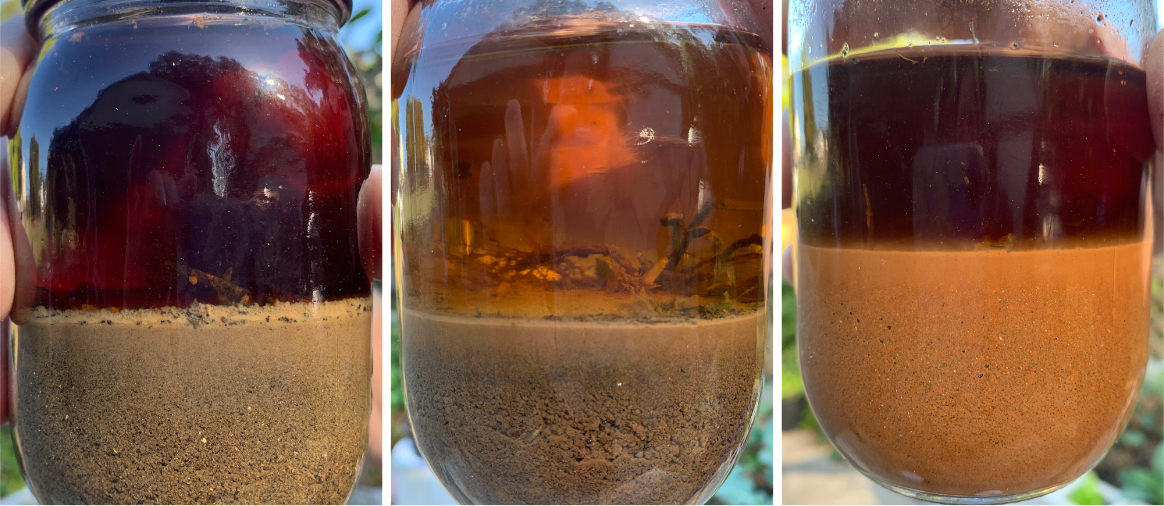Soil Texture Analysis Activity

Soil is composed of three major particle types:
Sand – Made from small particles of weathered rock. Sand has a dry gritty texture. Sand drains well, but due to the large spaces between the particles it does not hold water and nutrients; therefore, most plants do not grow well in sandy soil.
Silt – Silt is finer grained than sand and has a flour or “talc like” texture. It holds water and nutrients better than sand.
Clay – Clay has a very fine texture and feels sticky to the touch when wet. It holds water and nutrients well but does not drain or provide space for plant roots and air.
When plants and animals die and decay, their organic matter is added to the soil making it rich in nutrients. This organic matter is called humus.
Most soils are a combination of the three particle types. Understanding the relative composition of your soil will help you determine how well it will retain water and nutrients as well as its ability to support growth and survival of plants.
Materials per group:
- Soil sample (approximately 1 cup of soil)
- Pint or larger jar
- Powdered dish detergent
- Magnifying glasses
- Tablespoon measuring tool
- Obtain 1 soil sample per group, ideally from different areas around the school or have students bring soil from home. Be sure to break up any large clumps.
- Examine each soil sample using a magnifying glass. How does the soil feel? Can you identify the primary soil type?
- Fill the jar ½ full with the soil sample.
- Add 1 tablespoon of powdered dish detergent.
- Fill the jar the rest of the way with water, leaving about an inch of space at the top of the jar.
- Shake the jar for 1-2 minutes, allow each student an opportunity to shake the jar.
- Allow the soil to settle out. Observe over the next few days.
Sand will settle first because it has larger particles. This will happen fairly quickly. Silt will settle next, usually within a few hours. Clay will be the last to settle, and may take a day or two depending on how much clay your soil has. Organic matter or humus will usually float on top.
Bonus!
Check out our 3rd grade virtual lesson, Soils: Let’s Dig In!. (Lesson plan and Google Slides presentation with teaching videos, including a demonstration of this activity.)
- Categories: